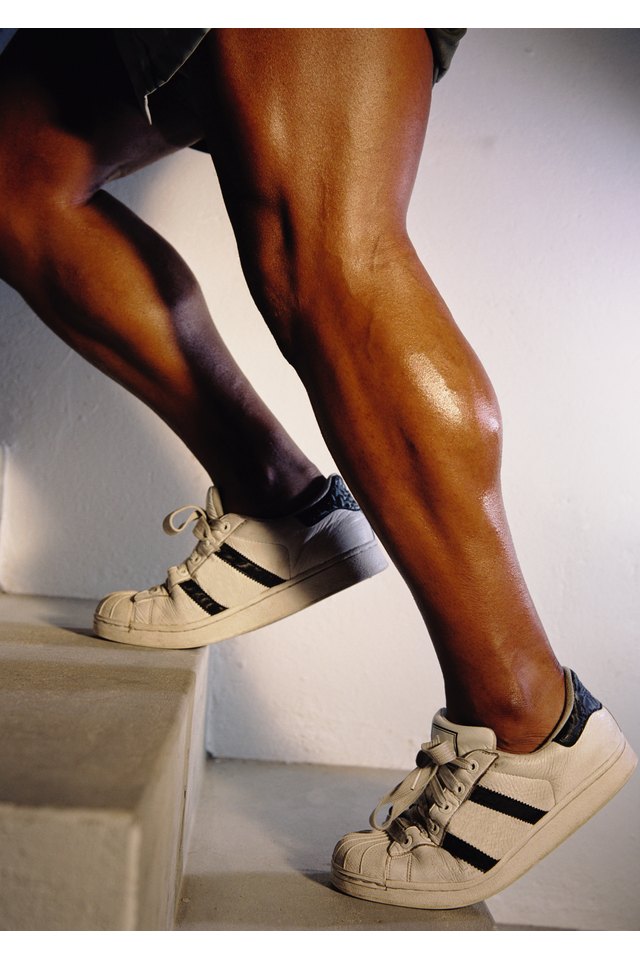Eccentric & Concentric Motions in a Leg Extension

Your quadriceps, or quads, are a powerhouse muscle group involved in every step you take during the day. Located at the front of your thighs, they make up the second largest muscle group in your body, and leg extensions are one of the most basic exercises for working them. Knowing what muscles make up the quads and their actions will help you execute this exercise properly and get the most out of every repetition.
Quad Anatomical Overview
Your quads comprise four muscles, thus the name. These are the inner vastus medialis, called the teardrop quad muscle, the outer vastus lateralis, called the flaring quad muscle, the deep-middle vastus intermedius and the superficial-middle rectus femoris. All four muscles function to extend the lower leg and to slightly externally rotate it. The rectus femoris also functions to flex the hips, as when you sit in a chair.
Concentric Motions
Leg extensions involve straightening your leg from a bent-knee position against a resistance while seated. The first motion, knee extension, is the concentric motion, also called the muscle-shortening motion. During this phase, the four quad muscles contract and pull on the lower leg to straighten it. As these same muscles also slightly rotate your leg externally, your toes will point slightly outward.
Eccentric Motions
Once your legs are straight, you must then flex your knees to return to the starting position. At this point your quads eccentrically contract and thus lengthen in the process. In addition, your lower legs internally rotate during the eccentric phase, so your toes point more inward than during the straight-leg position.
Isometric Motions
Your rectus femoris muscle is in a shortened state before you even begin the extension, because this muscle contracts isometrically when your hip is flexed in a seated position. Isometric motions, unlike concentric and eccentric motions, don't shorten or lengthen your muscles. They keep the muscles in a relatively fixed-length position. As you extend your knees during the concentric phase, your already-shortened rectus femoris shortens further, as much as it can, to assist the other three quad muscles. Then, as you flex your knees in the eccentric phase, the rectus femoris lengthens, but not fully, because of the flexed-hip seated position.
References
Writer Bio
This article was written by the CareerTrend team, copy edited and fact checked through a multi-point auditing system, in efforts to ensure our readers only receive the best information. To submit your questions or ideas, or to simply learn more about CareerTrend, contact us [here](http://careertrend.com/about-us).
